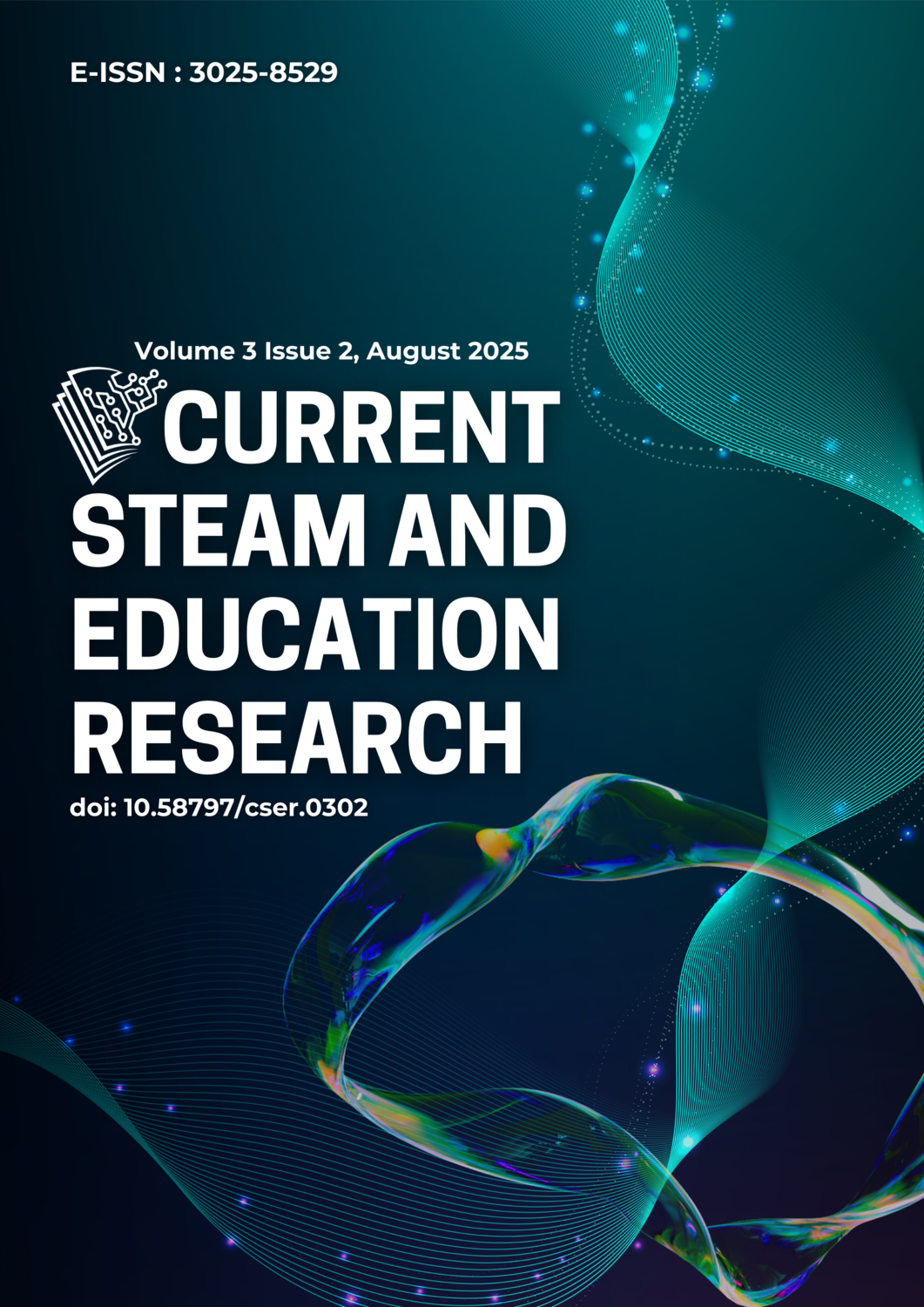Simulation-Assisted Instruction on Electro-Thermal Relationships in Metal-Oxide Varistors Using the FDTD Method
DOI:
https://doi.org/10.58797/cser.030203Keywords:
electro-thermal characteristics, simulation assisted, voltage surgesAbstract
Metal-Oxide Varistor (MOV) is a key component in electrical protection systems, safeguarding devices from excessive voltage surges. MOV exhibits non-linear behavior, acting as an insulator at normal voltages and a conductor at high voltages, absorbing excess energy to protect connected devices. This study employs the Finite-Difference Time-Domain (FDTD) method to analyze the electro-thermal characteristics of MOV, including the voltage-current relationship, resistivity changes with temperature, and temperature distribution within MOV. The FDTD method models the distribution of electric fields, magnetic fields, and temperature within MOV, which is modeled as small rectangular elements with resistivity dependent on the local electric field and temperature. Temperature distribution is calculated using the heat transfer equation, with resistivity determined based on experimental measurement data. Visualizations include graphs of the electric field and resistivity relationship at various temperatures and temperature distribution maps. Simulation results show that the Gaussian impulse current wave generates significant voltage surges and uneven temperature distribution within MOV. Above 600 K, the material's resistivity significantly decreases, allowing larger currents to flow through MOV. Temperature distribution in the form of heat maps identifies hotspots that may cause local degradation of MOV. These findings provide crucial insights for the design and analysis of overcurrent protection in electrical devices, ensuring the effectiveness of MOV in protecting devices from excessive voltage surges.
References
Baghdasaryan, B., Steinlechner, F., & Fritzsche, S. (2022). Maximizing the validity of the Gaussian approximation for the biphoton state from parametric down-conversion. Physical Review. A/Physical Review, A, 106(6). https://doi.org/10.1103/physreva.106.063714
Bai, X., Wang, S., & Rui, H. (2021). Numerical analysis of Finite-Difference Time-Domain method for 2D/3D Maxwell’s equations in a Cole-Cole dispersive medium. Computers & Mathematics with Applications, 93, 230–252. https://doi.org/10.1016/j.camwa.2021.04.015
Baltà‐Salvador, R., El‐Madafri, I., Brasó‐Vives, E., & Peña, M. (2025). Empowering Engineering Students Through Artificial Intelligence (AI): Blended Human–AI Creative Ideation Processes With ChatGPT. Computer Applications in Engineering Education, 33(1). https://doi.org/10.1002/cae.22817
Cheng, Y., Wang, Y., Liu, H., Li, L., Wang, X.-H., Zhang, X., Chen, Z., & Yang, S. (2023). A stable FDTD subgridding scheme with SBP-SAT for transient TM analysis. Journal of Computational Physics, 494, 112510–112510. https://doi.org/10.1016/j.jcp.2023.112510
Fang, Z., Alzate‐Banguero, M., Rajapurohita, A. R., Simmons, F., Carlson, E. W., Chen, Z., Aigouy, L., & Zimmers, A. (2024). Tuning the Resistance of a VO2 Junction by Focused Laser Beam and Atomic Force Microscopy. Advanced Electronic Materials. https://doi.org/10.1002/aelm.202400249
Grunwald, C., Riedel, W., Sauer, M., Stolz, A., & Hiermaier, S. (2024). Modeling the dynamic fracture of concrete — A robust, efficient, and accurate mesoscale description. Computer Methods in Applied Mechanics and Engineering, 424, 116886–116886. https://doi.org/10.1016/j.cma.2024.116886
Hu, Y., Wu, M., Yuan, M., Wen, Y., Ren, P., Ye, S., Liu, F., Zhou, B., Fang, H., Wang, R., Ji, Z., & Huang, R. (2024). Accurate prediction of dielectric properties and bandgaps in materials with a machine learning approach. Applied Physics Letters, 125(15). https://doi.org/10.1063/5.0223890
Kim, D., Ding, L., & Cho, T. (2025). Bridging theory and practice: the effects of experiential learning-based simulation training on technology integration competency among pre-service teachers. Journal of Research on Technology in Education, 1–19. https://doi.org/10.1080/15391523.2025.2456057
Kim, S.-W., Kim, N.-H., & Kil, G. (2020). Assessment of MOV Deterioration under Energized Conditions. Energies, 13(15), 4018–4018. https://doi.org/10.3390/en13154018
Lan, X., & Zhao, N. (2024). Development of a steady state electrothermal cosimulation model of SiC power modules. International Journal of Heat and Mass Transfer, 226, 125460. https://doi.org/10.1016/j.ijheatmasstransfer.2024.125460
Liu, K., Zhang, X., Qi, L., Qu, X., & Tang, G. (2021). A Novel Solid-State Switch Scheme With High Voltage Utilization Efficiency by Using Modular Gapped MOV for DC Breakers. IEEE Transactions on Power Electronics, 37(3), 2502–2507. https://doi.org/10.1109/tpel.2021.3115254
Meagher, T., Jiang, B., & Jiang, P. (2020). An enhanced finite difference time domain method for two dimensional Maxwell’s equations. Numerical Methods for Partial Differential Equations, 36(5), 1129–1144. https://doi.org/10.1002/num.22467
Moradi, M., Nayyeri, V., & Ramahi, O. M. (2020). An Unconditionally Stable Single-Field Finite-Difference Time-Domain Method for the Solution of Maxwell Equations in Three Dimensions. IEEE Transactions on Antennas and Propagation, 68(5), 3859–3868. https://doi.org/10.1109/tap.2020.2975675
Shinohara, R., Bagchi, S., Simakov, E., Baryshev, S. V., & Perez, D. (2024). Thermal and electric field driven rf breakdown precursor formation on metal surfaces. Physical Review Accelerators and Beams, 27(5). https://doi.org/10.1103/physrevaccelbeams.27.053101
Weichman, K., Miller, K. G., Malaca, B., Mori, W. B., Pierce, J. R., Ramsey, D., Vieira, J., Vranic, M., & Palastro, J. P. (2024). Analytic pulse technique for computational electromagnetics. Computer Physics Communications, 298, 109096–109096. https://doi.org/10.1016/j.cpc.2024.109096
Zhou, Q., Huang, X., Cao, T., Shao, B., & Liu, Y. (2022). Research on electrothermal characteristics of metal oxide varistor based on multi‐physical fields. IET Generation, Transmission & Distribution, 16(18), 3636–3644. https://doi.org/10.1049/gtd2.12551
Zygiridis, T. T., Amanatiadis, S. A., Papadopoulos, A. D., & Kantartzis, N. V. (2023). A finite-difference time-domain method for Lorentz dispersive media with reduced errors within arbitrary frequency bands. Computers & Mathematics with Applications, 137, 102–111. https://doi.org/10.1016/j.camwa.2023.02.018
Downloads
Published
How to Cite
Issue
Section
License
Copyright (c) 2025 Muhammad Farrel Dava Fauzan, Nur Siffa, Fita Pratiwi, Okan Fadilah, Defi Rosiana Azizah

This work is licensed under a Creative Commons Attribution 4.0 International License.
